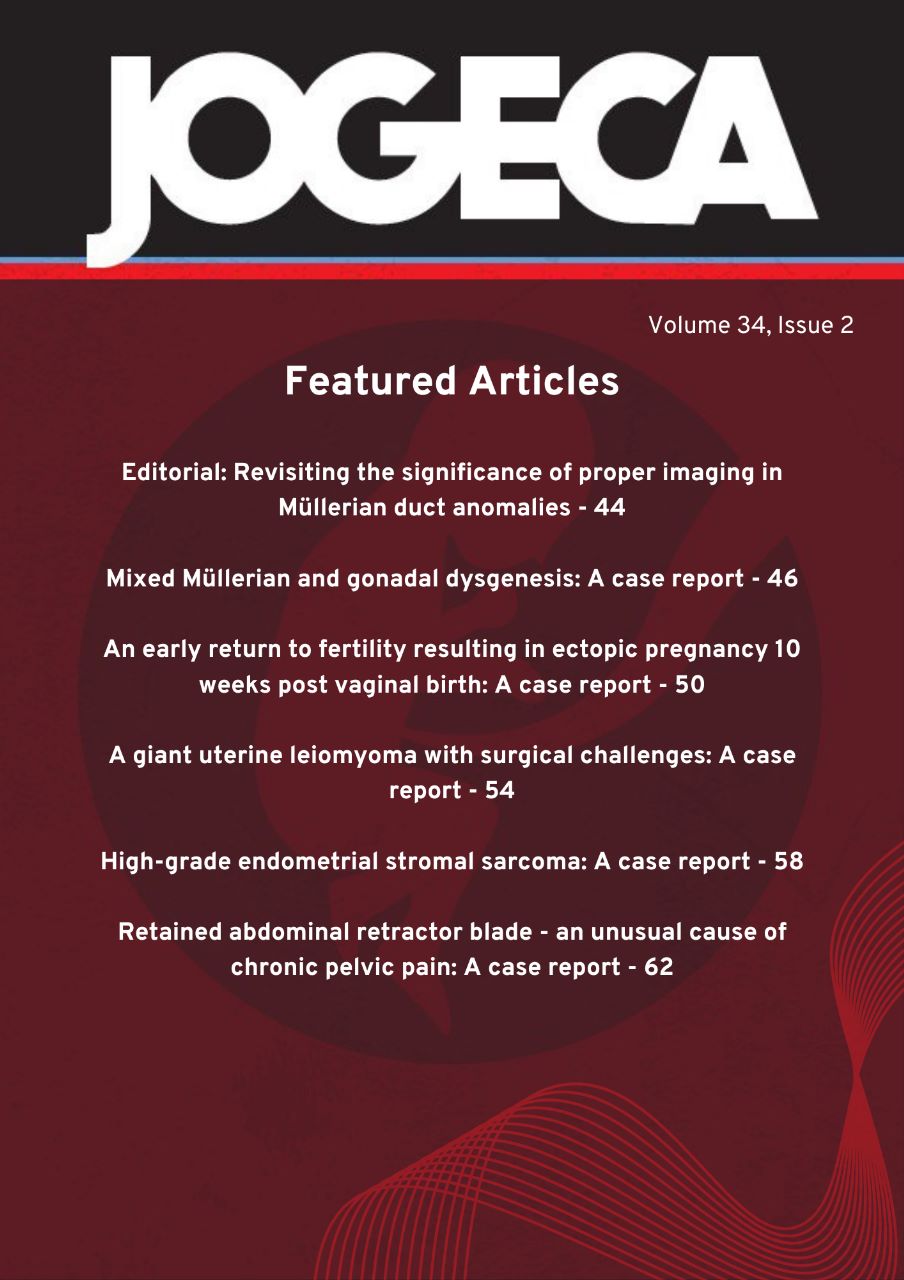Association between dyslipidemia and early-onset preeclampsia in pregnant women at a national referral facility in Kenya
DOI:
https://doi.org/10.59692/jogeca.v34i3.72Keywords:
dyslipidemia, eclampsia, normotensive, preeclampsiaAbstract
Background: Preeclampsia is a syndrome marked by hypertension that appears after 20 weeks of pregnancy and is linked to maternal and fetal complications. Physiological hyperlipidemia develops as the pregnancy proceeds, and lipids are taken up by the placenta to be used by the fetus. However, in preeclampsia, due to placental insufficiency, there is a decrease in lipid uptake, disrupting lipid metabolism.
Objective: To assess association between dyslipidemia and preeclampsia in pregnant women presenting at a national referral facility in Kenya.
Methods: This was a case-control study where 75 women presenting with preeclampsia and aged between 14 and 45 years with a gestational age of between 20 and 34 weeks were recruited as cases, and 75 age-matched pregnant women as controls. Medical data were obtained from their files, and a 5mL blood specimen was drawn for lipid profile analysis. Data were analyzed using STATA version 13 (Stata Corp Inc., USA). Chi-square was calculated to establish statistical significance. A p-value of <0.05 was considered significant.
Results: A majority, 78.8% of the cases, had high non-high-density lipoprotein cholesterol (HDL-C) compared with 58.7% of controls (p-value =0.02). Low HDL-C was reported in 4% of cases against 2.7% of controls (p-value =0.6.) High low-density lipoprotein cholesterol (LDL-C) was reported in 42.7% of cases compared to 45.3% of controls (p-value =0.7). Preeclampsia patients had high odds of dyslipidemia odds ratio (OR) 2.3, (95% CI 1.1-4.7, p-value = 0.04).
Conclusion: Dyslipidemia is more prevalent among women with preeclampsia than normotensives of the same gestational age. Non-HDL-C strongly correlates with atherogenic lipoproteins, and it could be elevated even when LDL-C is within normal reference range, thus making it a valuable marker of dyslipidemia in preeclampsia. There is an association between dyslipidemia and preeclampsia.
Downloads
Published
How to Cite
Issue
Section
Categories
License
Copyright (c) 2022 The Authors.

This work is licensed under a Creative Commons Attribution 4.0 International License.




